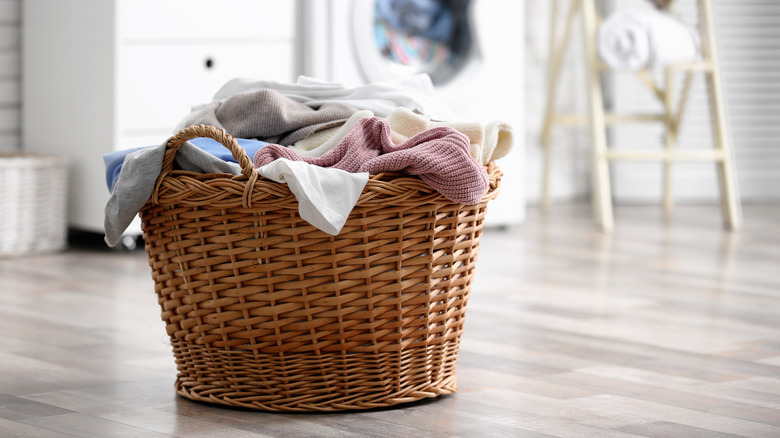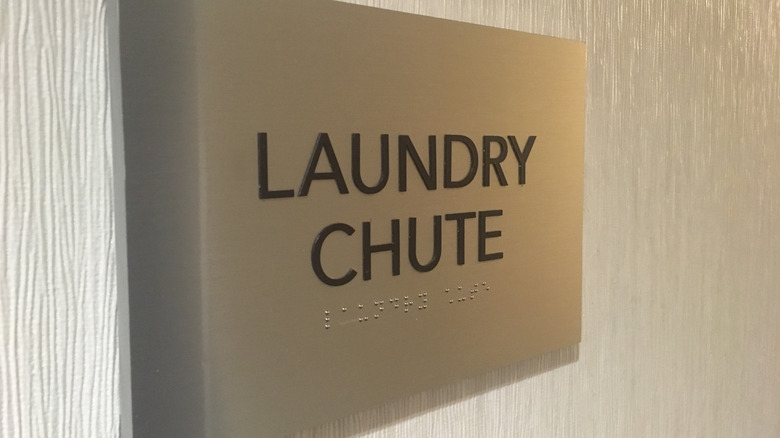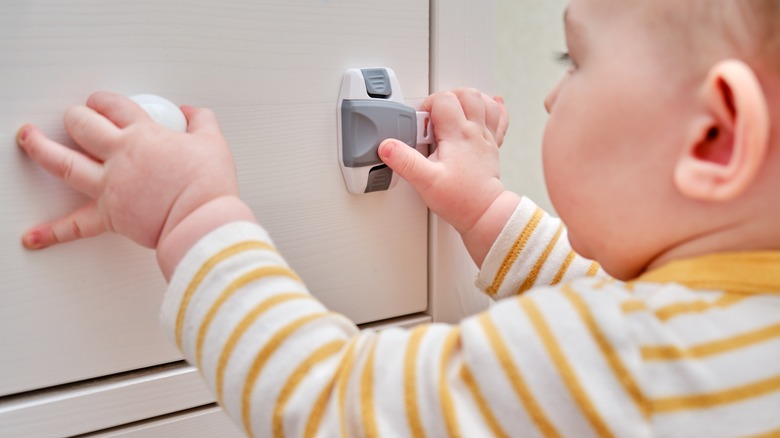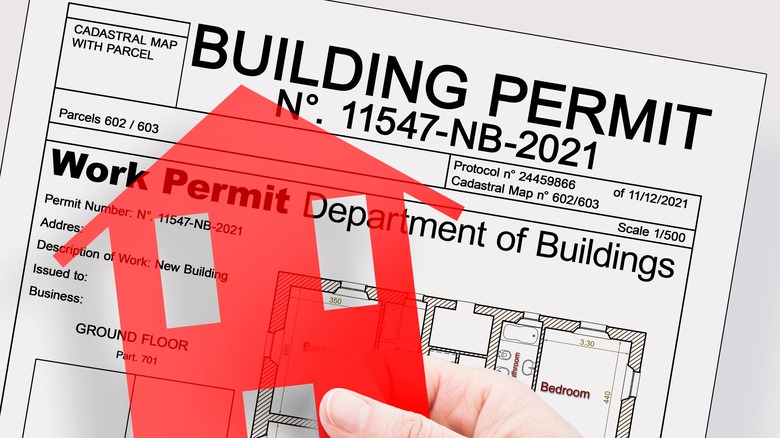What You Need To Know Before Installing A Laundry Chute
Managing laundry can be a real chore. Whether you live by yourself or have a household full of young children, keeping up multiple loads of whites, darks, linens, and everything in between often seems like a never-ending task. One of the biggest issues many people have that relates to this is hauling clean and dirty clothes up and down the stairs before and after washing them. Laundry hampers can also take up precious space on the bedroom or bathroom floor that could be better used for something else.
A laundry chute can help address both of these complaints and make the task a little less cumbersome. With a laundry chute, you can drop clothing and linens straight down next to your washer and dryer, eliminating the hassle of dealing with hampers full of dirty laundry. Before you jump onto the idea of hiring someone to install a laundry chute or attempting to do so yourself, there are a few things you'll want to know.
What is a laundry chute?
Let's start by examining what a laundry chute is. Laundry chutes are designed to create a direct path between a room (or rooms) in a home to the laundry room. They typically consist of a long and wide duct that runs through the walls or floors of the house, ending near the washing machine. Opening the access door at the beginning of the chute allows users to drop down their dirty laundry and send it straight down to the laundry room, where it will be ready and waiting to be added to a wash cycle. Where the chute will end needs to be well-planned to ensure that there is space for a laundry basket to sit beneath it. Moreover, it should be placed in such a way that will prevent huge piles of clothing from forming anywhere that could become a fire hazard.
Depending on the home and its layout, the chute may have multiple access points. For example, a 3-story home with a laundry room on the first floor might have an access point on each of the top two stories. Similarly, some chutes may be designed to provide multiple access points on the same floor, such as from different bedrooms or bathrooms on the same level of the home.
What are the benefits of having a laundry chute?
There are several reasons to consider adding a laundry chute to your home. Perhaps the biggest one is convenience. A laundry chute can greatly simplify your life, particularly if a lot of people live in your house and go through lots of clothing and linens every week. With the chute installed, you don't have to worry about dragging baskets full of heavy laundry down the stairs multiple times a week. Instead, you can simply toss clothes down the chute, and they'll be waiting in the laundry room when you're ready to start a load.
Another benefit of installing a chute is that you don't have to worry about all the dirty clothes piling up in each room, causing it to look messy or leaving behind a foul odor. Because everything can just be sent down the chute once it is dirty, you won't even need to have a dirty clothes hamper in the bedroom. This can also free up more floor space which can be used for something else or left empty to help the room feel more spacious.
If you're thinking about selling your home in the future, adding a laundry chute could help increase its value. Just as you see all the benefits of this addition, so will potential homebuyers. They'll appreciate how much time and effort the laundry chute could help them save, and may be willing to offer more to purchase your home.
Why don't you see laundry chutes very frequently in new construction?
If you've been touring new build houses lately, you might think laundry chutes are a thing of the past. While they were pretty common in homes built several decades ago, it is rare to find them in new construction. This might sound a bit puzzling, given all the benefits of having a laundry chute. However, it makes a little more sense when considering home design trends.
While the laundry room was almost always on the lowest level of a home, more recently, builders have been placing them on the same level as the bedrooms. This change gained popularity because of how much more convenient it is for homeowners to walk down the hall to do a load of laundry rather than carrying heavy baskets up and down the stairs. With this change in modern layouts, there just isn't a need for laundry chutes because the washer and dryer are already so close to the main living areas.
Another change that has occurred in recent years is that appliances have become much more energy-efficient. With it costing less to run the washer and dryer for a small load of laundry, individuals don't have to wait until their hampers are bursting at the seams and weighing a ton to carry them down the stairs to wash. This made carrying the basket less of a nuisance, making the chute feel unnecessary.
Can you install a laundry chute yourself, or is it better to hire a professional?
If you've decided to install a laundry chute, you have two options: do it yourself or hire a general contractor to complete the project for you. If you have the time to dedicate to the project and learn some basic construction, attempting to install the chute on your own may be a possibility. However, it may depend on the layout of your home and how many obstacles (such as wires) are in the pathway to the laundry room. It is also important to make sure that you size the chute appropriately. If you make it too tight, it will likely become jammed, especially with bulkier sheets and towels.
If you decide to attempt this project yourself, you must first plan the route. Then, cut the holes in the laundry room ceiling and the floor or wall where the chute will be accessible from the home's upper levels. When constructing the chute itself, metal ductwork is typically the best material to use. Not only is it relatively easy to work with and can be angled to get around different obstacles, but it also has a smooth interior finish that will help items glide through without getting caught.
However, installing a laundry chute is still somewhat complex, so it may not be the best DIY project if you haven't done anything like it before. Hiring a professional contractor to complete this job for you may be the right choice if you're not fully confident in your skill set or are worried that you don't have the time to finish it in a timely manner. With a professional, you can feel more comfortable that everything will be completed correctly, and it will be less likely that major errors will occur along the way.
How much does it cost to install a laundry chute?
Several factors will impact how much it will cost to install a laundry chute. The biggest factor is whether you will install the chute yourself or hire a professional contractor. Installing it yourself will be the cheapest option. However, you should be prepared to give up several hours of your time that could be spent working on something else. The cost to put in the chute can vary based on the layout of your home and the distance from the entrance to the laundry room. Longer paths will require more ductwork, increasing the total project cost. However, in general, you should expect to spend between $100 and $200 to purchase the materials you'll need to build the chute yourself.
If you decide to hire a contractor, the project's layout will also impact its total cost. So will where you live, as contractors charge more in high-cost-of-living areas. Generally speaking, you should budget at least $800 if you plan to pay a general contractor to get the chute ready for you. Contacting a few companies and getting quotes to compare is also a good idea before making a final decision.
Do clothes get stuck in a laundry chute?
It is possible for clothing and other items to get stuck in a laundry chute. When this happens, it can be frustrating. However, you should be able to get the items out without too much trouble in most cases. One thing you can try is tossing something heavier down the chute to help clear a clog. Try rolling a pair of jeans up into a cylinder shape and tossing it down through the chute. If this doesn't work, go down to the laundry room, where the chute ends. Look up to see if you can see the issue, and use the end of a broom or yardstick to push up on the blockage.
You can take steps to limit how often items will get stuck inside the chute. First, when designing and building the chute, ensure the interior is as smooth as possible. If anything is sticking out of the chute — even something very small — it may catch on something and stop it from making it all the way to the laundry room. Limiting how much you put down the chute at a time can also lessen the chances of something getting stuck on the way down. Similarly, it is better to install a wider chute rather than a narrower one, if the layout of your home allows you to do so.
Are laundry chutes a safety concern if you have children?
If not properly secured, laundry chutes can be a safety concern for homes with children (or any houses children may visit). AOL shared the story of a 2-year-old who fell down a laundry chute while his parents were still sleeping. The loud scream of the child woke the parents, who then quickly discovered that the screams were coming from inside the wall where the laundry chute was. While the opening to the chute was only about 10 inches wide, it was large enough for the small toddler to get into. Fortunately, the laundry chute wasn't actually in use and was just being used to run wires and cables. The toddler got caught by these wires, preventing him from falling all the way down to the ground and allowing him to escape the whole incident with just a few bruises.
It is easy to see how this story could have had a tragic ending and why it is essential to secure the entrance to a laundry chute. Using a tamper-proof lock can prevent young children from being able to open the access door to the chute themselves. It is also important to make sure that the laundry chute has a 30-minute fire door, which gives 30 minutes of fire resistance. In the event of a fire in the home, doors with this rating will do a better job of slowing down how quickly the flames can spread. You can, of course, choose a higher rating, going up to a 3-hour mark if you choose.
Do you need a permit to install a laundry chute?
Because permit requirements can vary for different cities, counties, and states, you will need to check with your local ordinances to determine whether one will be needed to install a laundry chute in your home. Permits are often required for any major structural work that alters the property, but again different cities or counties may have varying definitions of what is considered significant. If a contractor is completing the project for you, they should be able to offer advice regarding whether a permit is indeed necessary. However, it is ultimately up to you to make sure that home renovations follow the legal requirements of your ordinance, so it is always a good idea to follow up with the city regarding the process.
If you do find that a permit is needed, allow yourself time to apply and get it approved before planning to start the work. In some cases, it may take several weeks for the permit to be issued. You will also have to pay a fee to get it, which can vary based on location. Ignoring the requirements to avoid waiting or paying the fees is not a good idea. Without proper permitting, the city could hold up the completion of your project. Work completed without permits could also make it more difficult to sell your home in the future.
What type of maintenance do laundry chutes need?
Laundry chutes require some basic maintenance, and keeping up with the upkeep can help prevent clothing or linens from getting stuck in the chute. It can also limit safety hazards, both in relation to fire spreading or children falling down.
Periodically conduct a visual inspection of the interior of the chute. Use a flashlight to look down from the access door and up from the entrance to the laundry room. If you see any clothing or other obstructions, work to dislodge them using the long handle of a broom or a yardstick. Once you've confirmed that the path is clean and clear, inspect the access door(s). Confirm that they still open and close as they should and that nothing has become too loose. If there are any loose screws, tighten them or hire a professional to do so. Check to make sure that the child safety locks still function properly during this inspection as well. If the doors do not close properly or the locks are broken, it could lead to a potential fire or safety hazard.
Is a Laundry Jet better than a traditional laundry chute?
Traditional laundry chutes have their appeal, but they also have some drawbacks. One major downside of a laundry chute is that it can also be used to move laundry down to a lower level of the home and can't send laundry around within the same level. The Laundry Jet offers a modern solution to this problem. Unlike laundry chutes that move clothes and linens using gravity as they drop straight down, the Laundry Jet works like a vacuum, sucking clothing through the tubes to the laundry room. This major design difference means that it can move clothing both horizontally and vertically. So, if the laundry room is on the same level as the bedroom, you could still have a Laundry Jet installed to get items close to the washer and dryer.
While the Laundry Jet has some advantages over a standard laundry chute, you will have to pay a premium for them. Depending on the size and layout of your home, you should expect to pay over $2,000 (and possibly up to $15,000) just for the piping for the setup. This estimate doesn't even include installation, which can also vary based on the complexity of the setup. This is clearly more than you'll spend to have a traditional laundry chute set up, so you'll have to decide if you're willing to pay for such a luxury.










